Abstract
Traditional and novel techniques were tested and compared for their usefulness in evaluating biodegrad-ability claims made for newly formulated “degradable” plastic film products. Photosensitized polyethylene (PE), starch-PE, extensively plasticized polyvinyl chloride (PVC), and polypropylene (PP) films were incorporated into aerobic soil. Biodegradation was measured for 3 months under generally favorable conditions. Carbon dioxide evolution, residual weight recovery, and loss of tensile strength measurements were supplemented, for some films, by gas chromatographic measurements of plasticizer loss and gel permeation chromatographic (GPC) measurement of polymer molecular size distribution. Six- and 12-week sunlight exposures of photosensitized PE films resulted in extensive photochemical damage that failed to promote subsequent mineralization in soil. An 8% starch-PE film and the plasticized PVC film evolved significant amounts of CO2 in biodegradation tests and lost residual weight and tensile strength, but GPC measurements demonstrated that all these changes were confined to the additives and the PE and PVC polymers were not degraded. Carbon dioxide evolution was found to be a useful screening tool for plastic film biodegradation, but for films with additives, polymer biodegradation needs to be confirmed by GPC. Photochemical cross-linking of polymer strands reduces solubility and may interfere with GPC measurements of polymer degradation.
Full text
PDF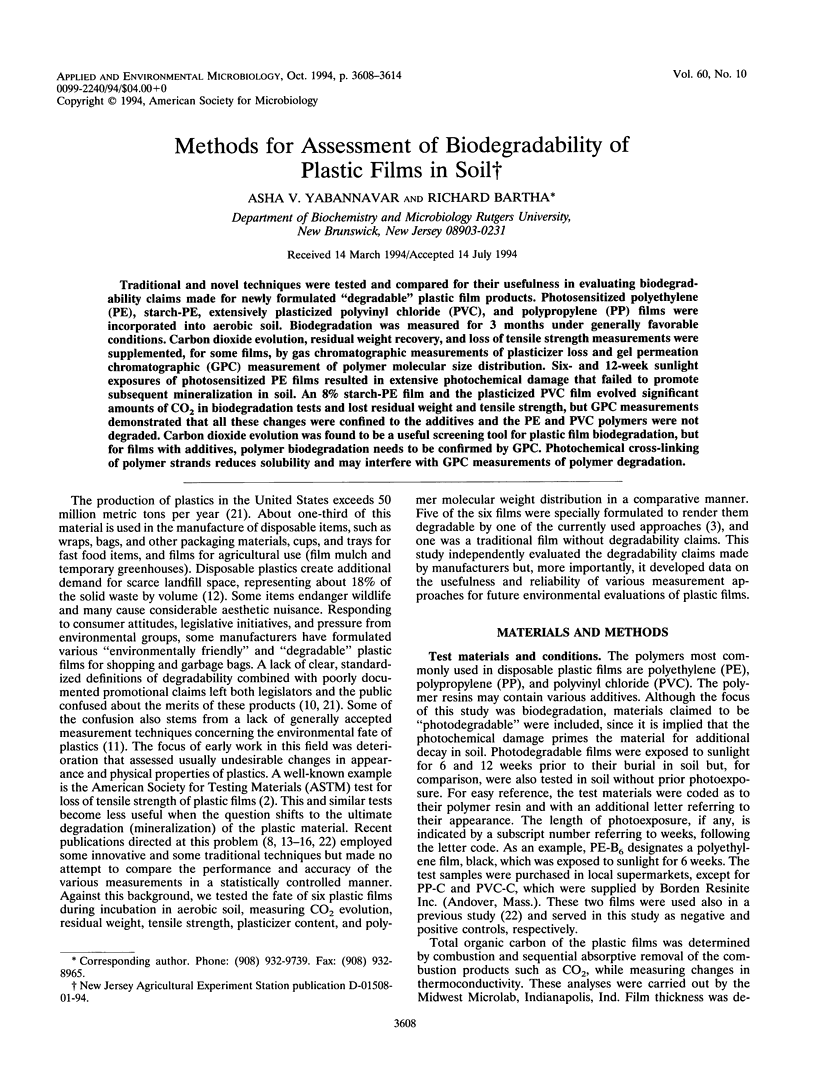
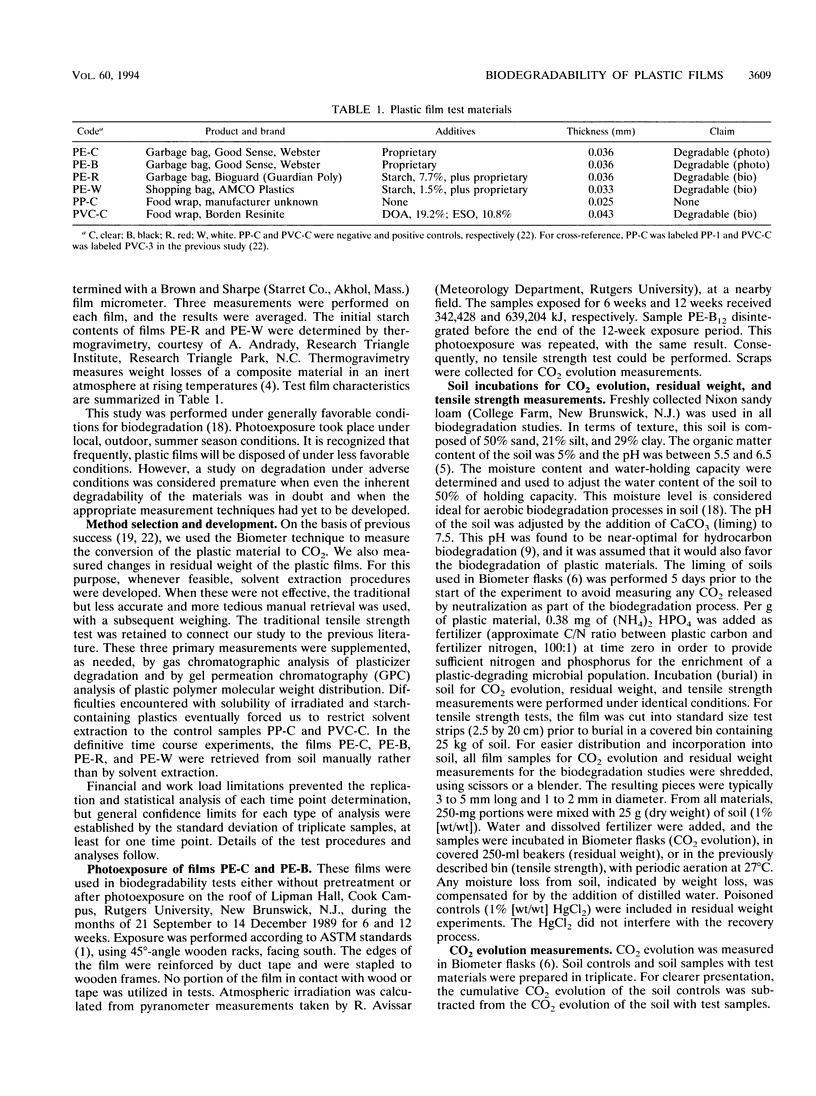
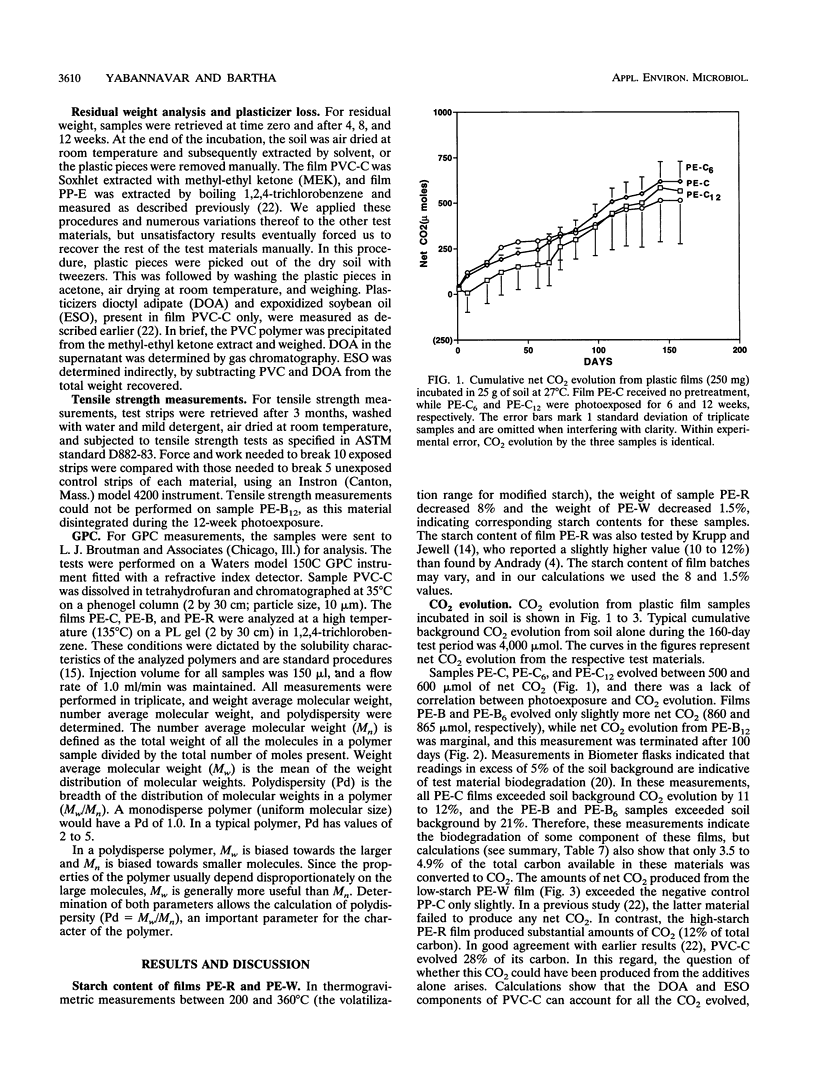
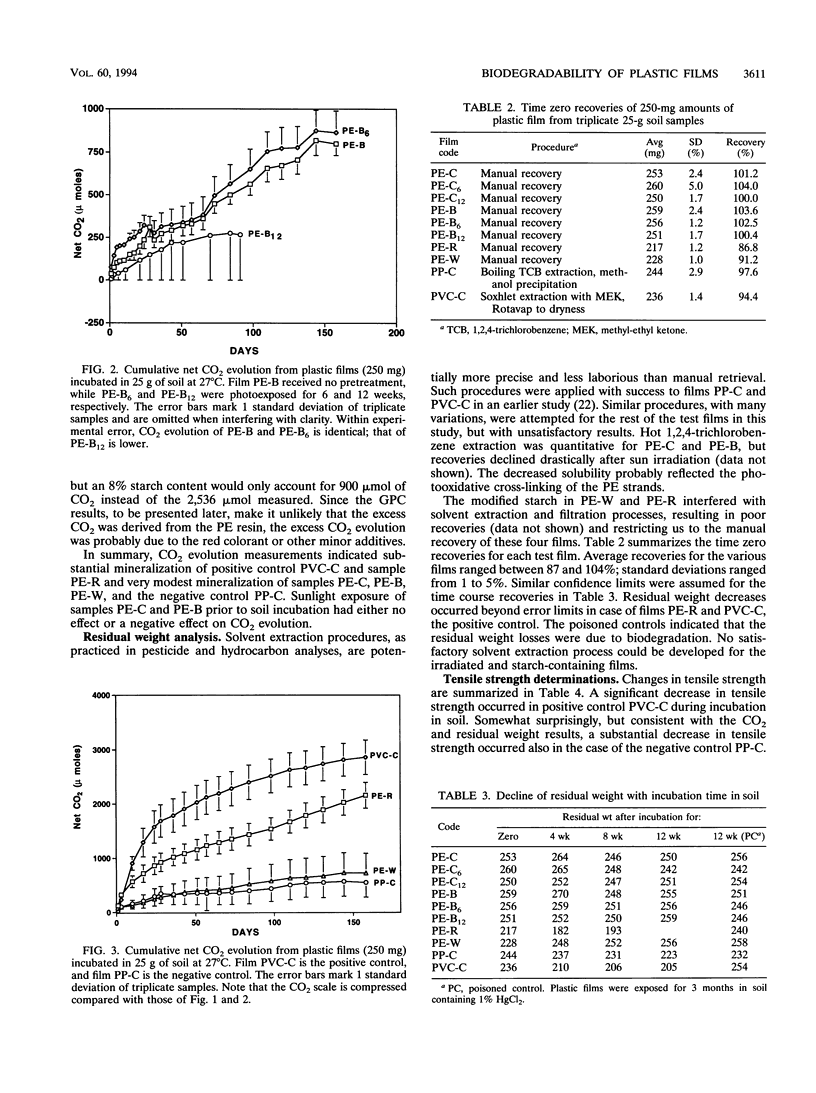
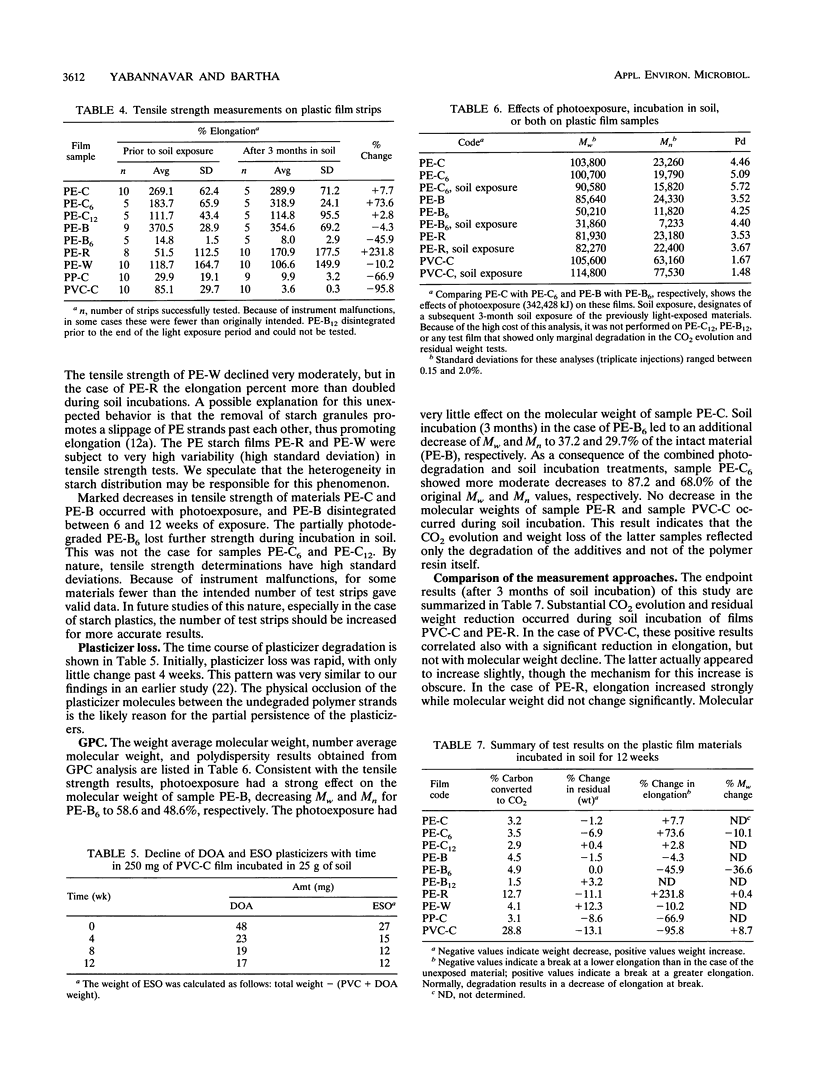
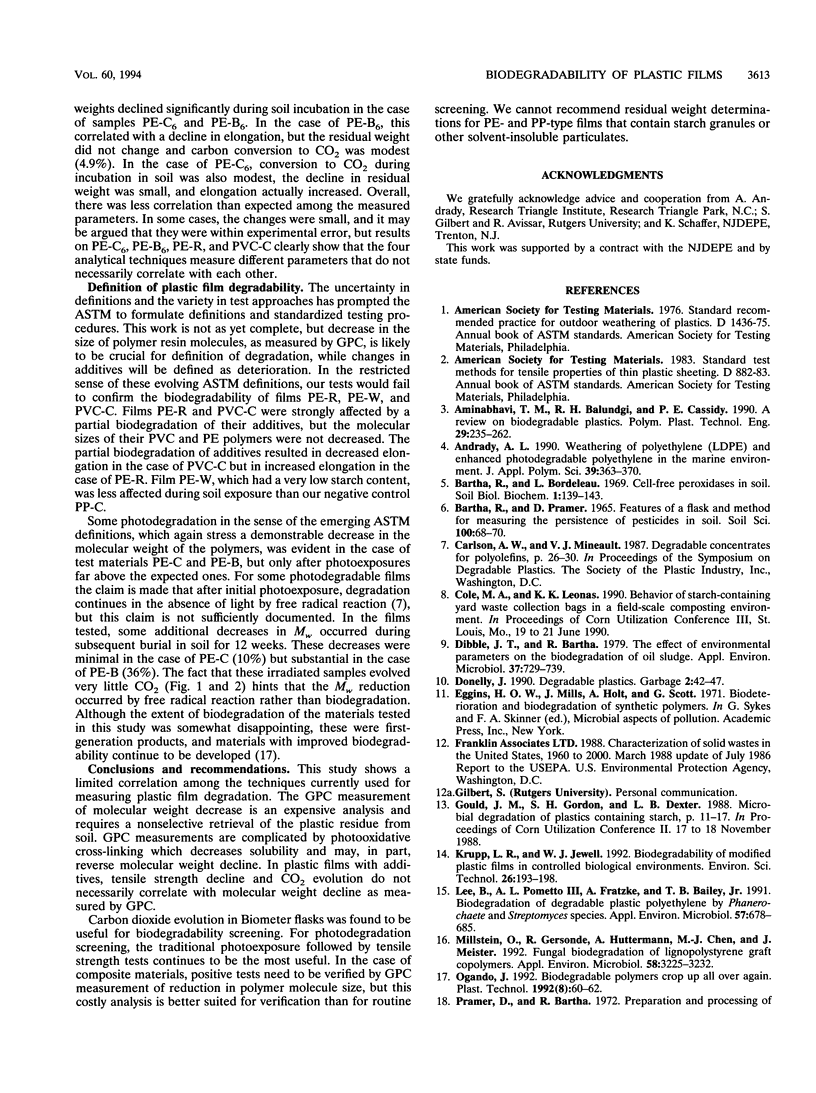

Selected References
These references are in PubMed. This may not be the complete list of references from this article.
- Dibble J. T., Bartha R. Effect of environmental parameters on the biodegradation of oil sludge. Appl Environ Microbiol. 1979 Apr;37(4):729–739. doi: 10.1128/aem.37.4.729-739.1979. [DOI] [PMC free article] [PubMed] [Google Scholar]
- Lee B., Pometto A. L., Fratzke A., Bailey T. B. Biodegradation of degradable plastic polyethylene by phanerochaete and streptomyces species. Appl Environ Microbiol. 1991 Mar;57(3):678–685. doi: 10.1128/aem.57.3.678-685.1991. [DOI] [PMC free article] [PubMed] [Google Scholar]
- Milstein O., Gersonde R., Huttermann A., Chen M. J., Meister J. J. Fungal biodegradation of lignopolystyrene graft copolymers. Appl Environ Microbiol. 1992 Oct;58(10):3225–3232. doi: 10.1128/aem.58.10.3225-3232.1992. [DOI] [PMC free article] [PubMed] [Google Scholar]
- el-Din Sharabi N., Bartha R. Testing of some assumptions about biodegradability in soil as measured by carbon dioxide evolution. Appl Environ Microbiol. 1993 Apr;59(4):1201–1205. doi: 10.1128/aem.59.4.1201-1205.1993. [DOI] [PMC free article] [PubMed] [Google Scholar]


